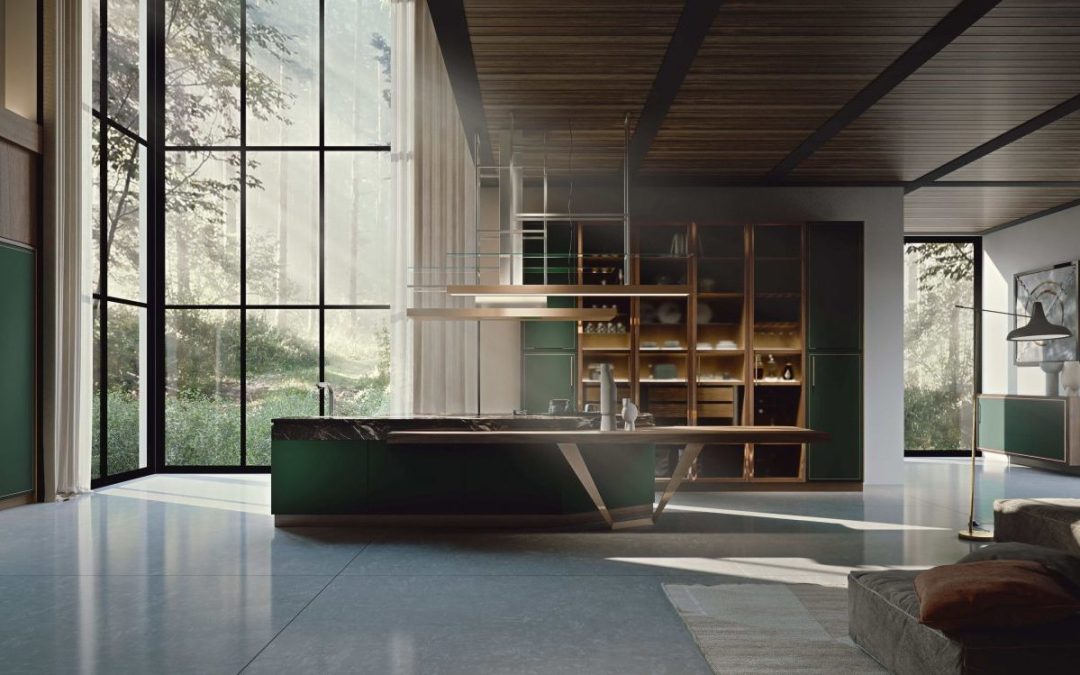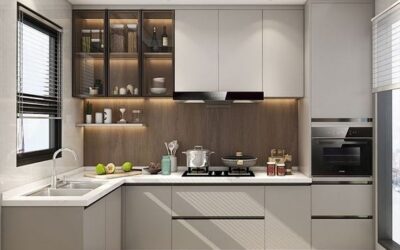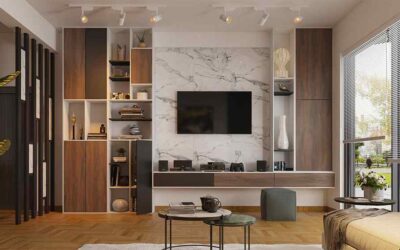Glass, as an interior material, refers to the use of transparent, translucent, or decorative glass elements in the design and construction of indoor spaces. Glass is a versatile material widely used in interior design for its transparency, reflectivity, and aesthetic appeal. Its unique properties make it suitable for various applications, contributing to both functional and decorative aspects of interior spaces.
-
Table of Contents
Here are some common uses and benefits of glass as an interior material:
1. Windows and Doors:
Glass windows and doors allow natural light to enter a space, creating a bright and open atmosphere. They also provide views to the outside, connecting the interior with the surrounding environment.
2. Glass Partitions:
Glass partitions are used to divide spaces without sacrificing the sense of openness. They can be clear, frosted, or textured for privacy while maintaining visual connectivity.
3. Mirrors:
Mirrors made of glass are integral to interior design, serving both functional and decorative purposes. They enhance the perception of space, reflect light, and contribute to the overall aesthetics of a room.
4. Glass Railings:
Glass railings are a modern and elegant choice for staircases, balconies, and mezzanines. They provide safety without obstructing views, adding a sense of openness.
5. Glass Furniture:
Glass is used in furniture design for items like tables, shelves, and cabinets. Glass furniture contributes to a contemporary and sleek aesthetic, and it can create an illusion of space in smaller rooms.
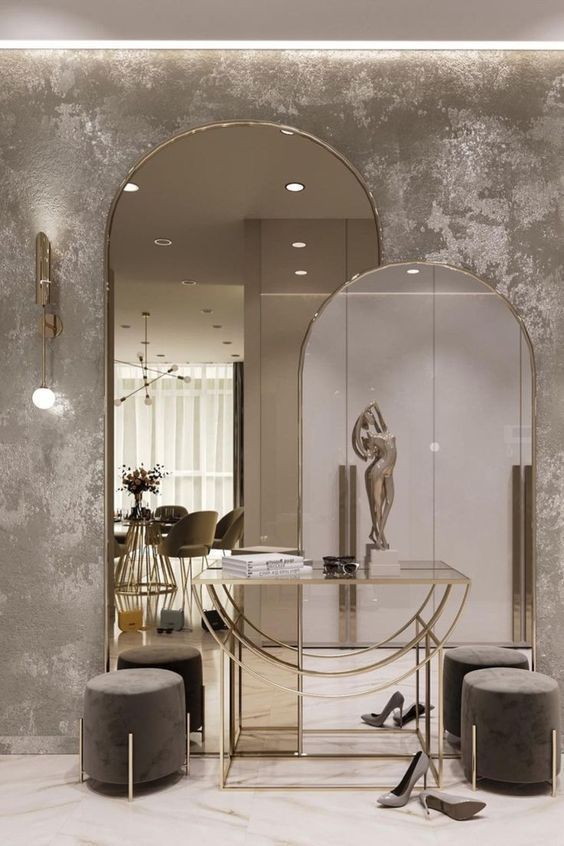
6. Glass Tiles and Backsplashes:
Glass tiles are popular in kitchens and bathrooms for backsplashes and wall coverings. They add a glossy and reflective surface, are easy to clean, and come in various colors and patterns.
7. Skylights:
Skylights with glass allow natural light to enter from above, illuminating interior spaces and reducing the need for artificial lighting during the day.
8. Glass Countertops:
Glass countertops are a modern and durable choice for kitchens and bathrooms. They can be backlit for added visual interest and are resistant to stains and scratches.
9. Glass Shelving:
Glass shelves are lightweight and visually unobtrusive, making them suitable for displaying items without overwhelming the visual space.
10. Glass Balustrades:
Glass balustrades are commonly used in staircases and balconies, providing safety while preserving the sense of openness and light.
11. Glass Art and Decor:
Decorative glass elements, such as stained- glass windows or glass art installations, can add a touch of color, pattern, and artistic expression to interior spaces.
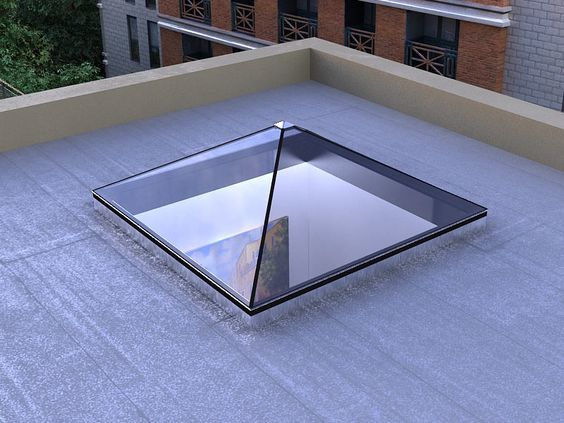
12. Frosted or Textured Glass:
Frosted or textured glass is used for privacy in areas like bathrooms or offices while still allowing light to filter through. It adds a layer of sophistication to the design.
13. Glass Doors with Integrated Blinds:
Doors with glass panels and integrated blinds offer privacy when needed while allowing control over the amount of natural light entering a room.
14. Frameless Glass Shower Enclosures:
Frameless glass shower enclosures provide a clean and contemporary look in bathrooms. They enhance the visual appeal of the space and create a seamless feel.
15. Energy-Efficient Glass:
High-performance, energy-efficient glass can be used in windows to improve insulation and reduce energy consumption for heating and cooling.

-
Different Types Of Glass:
There are various types of glass used in interior design, each with distinct characteristics and applications. The choice of glass depends on factors such as transparency, strength, safety, insulation, and aesthetic considerations. Here are some common types of glass used in interior design:
Clear Float Glass:
Standard clear float glass is the most common type of glass. It is transparent and lets in natural light, making it suitable for windows, doors, and general applications.
Low-Iron Glass:
Low-iron glass, also known as extra-clear or ultra-clear glass, has reduced iron content, resulting in a clearer and more color-neutral appearance. It is often used in applications where true color clarity is essential.
Tinted Glass:
Tinted glass is treated to add a subtle color, typically grey or bronze, to reduce glare and control the amount of sunlight entering a space. It is commonly used in windows and doors.
Reflective Glass:
Reflective glass has a metallic coating that reflects a portion of the light and heat. It is used to control glare and heat in buildings and is often seen in commercial facades.
Frosted or Acid-Etched Glass:
Frosted or acid-etched glass has a textured surface that diffuses light, providing privacy while allowing natural light to filter through. It is used in partitions, doors, and decorative elements.
Patterned Glass:
Patterned glass comes in various designs and textures, adding visual interest and privacy. It is commonly used in windows, doors, and decorative applications.
Laminated Glass:
Laminated glass consists of two or more layers of glass with an interlayer of polyvinyl butyral (PVB) or ethylene-vinyl acetate (EVA). It enhances safety by holding the glass together if shattered, making it suitable for windows, skylights, and balustrades.
Tempered Glass:
Tempered glass is treated with heat to enhance its strength. It shatters into small, relatively harmless pieces when broken, reducing the risk of injury. It is used in shower doors, tabletops, and safety glass applications.
Wired Glass:
Wired glass has wire mesh embedded in it, providing additional strength. It is used in fire-rated doors and windows, where safety and fire resistance are crucial.
Switchable Glass (Smart Glass):
Switchable glass allows users to control its transparency electronically. It can change from transparent to opaque with the flick of a switch, making it suitable for privacy applications.
Bulletproof Glass:
Bulletproof or ballistic glass is designed to resist penetration from bullets or other projectiles. It is used in high-security environments, such as banks or government buildings.
Double Glazed Glass:
Double glazed glass consists of two panes separated by a layer of air or gas, providing improved insulation against heat and sound. It is commonly used in windows for energy efficiency.
Solar Control Glass:
Solar control glass is designed to reduce the transmission of solar heat while allowing natural light. It helps control temperature and is often used in buildings with large glass facades.
Fire-Rated Glass:
Fire-rated glass is designed to withstand fire and heat for a specified period. It is used in fire doors, windows, and partitions to maintain safety in case of a fire.
Anti-Reflective Glass:
Anti-reflective glass is coated to minimize reflections, glare, and maximize light transmission. It is used in display cases, museums, and high-end architectural applications.
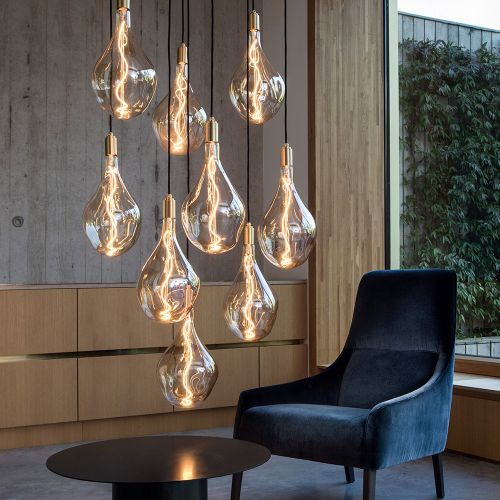
-
Here are some ways in which glass is commonly used in interior design:
Transparency and Light:
One of the primary characteristics of glass is its transparency. This property allows natural light to penetrate and brighten spaces, creating a sense of openness and airiness. This is particularly useful in smaller spaces where maximizing natural light is crucial.
Space Division:
Glass can be used to divide spaces without creating a visually closed-off feeling. Glass partitions or dividers can separate different areas of a room or office while maintaining a sense of connection between them. This is especially popular in modern office designs.
Reflectivity:
Glass has reflective properties, and when strategically placed, it can enhance the perception of space by reflecting light and surroundings. Mirrors, for example, can be used to make a space feel larger.
Visual Appeal:
Glass can add a sleek and modern aesthetic to interiors. It can be used for various elements such as countertops, tables, shelving, and decorative objects. The clean lines and reflective surface of glass often contribute to a contemporary and sophisticated look.
Versatility in Design:
Glass comes in various forms, including clear, frosted, tinted, or textured. This allows for a wide range of design possibilities. Frosted or etched glass, for instance, can provide privacy while still allowing light to filter through.
Staircases and Railings:
Glass is often used in staircases and railings to create a sense of openness and modernity. Glass railings, in particular, can be used in both residential and commercial spaces to provide safety without obstructing the view.
Backsplashes and Tiles:
Glass tiles are a popular choice for kitchen and bathroom backsplashes. They are easy to clean, come in various colors and patterns, and can add a contemporary touch to these spaces.
Furniture:
Glass is commonly used in furniture design, including coffee tables, dining tables, and cabinets. Glass furniture can give a light and unobtrusive feel to a space.
Doors and Windows:
Glass doors and windows play a crucial role in interior design by connecting indoor spaces with the outdoors. Sliding glass doors, for example, can create a seamless transition between indoor and outdoor living areas.
Environmental Considerations:
In contemporary design, there is an increasing focus on sustainability. Glass, being a recyclable material, aligns with eco-friendly design practices.
Conclusion
Glass as an interior material is valued for its ability to introduce natural light, create a sense of openness, and contribute to modern and sophisticated design aesthetics. Designers often leverage the transparency and reflective qualities of glass to enhance spatial qualities and create visually stunning interiors.
Get Free Design

About Author apurva nagure
You May Also Like…
The Ultimate Guide to Small Modular Kitchen Designs in 2024
A brief overview of Small Modular Kitchen DesignThe space...
Top 10 TV Unit Designs to Enhance Your Home Interiors
Television unit designs have changed in response to changing...

